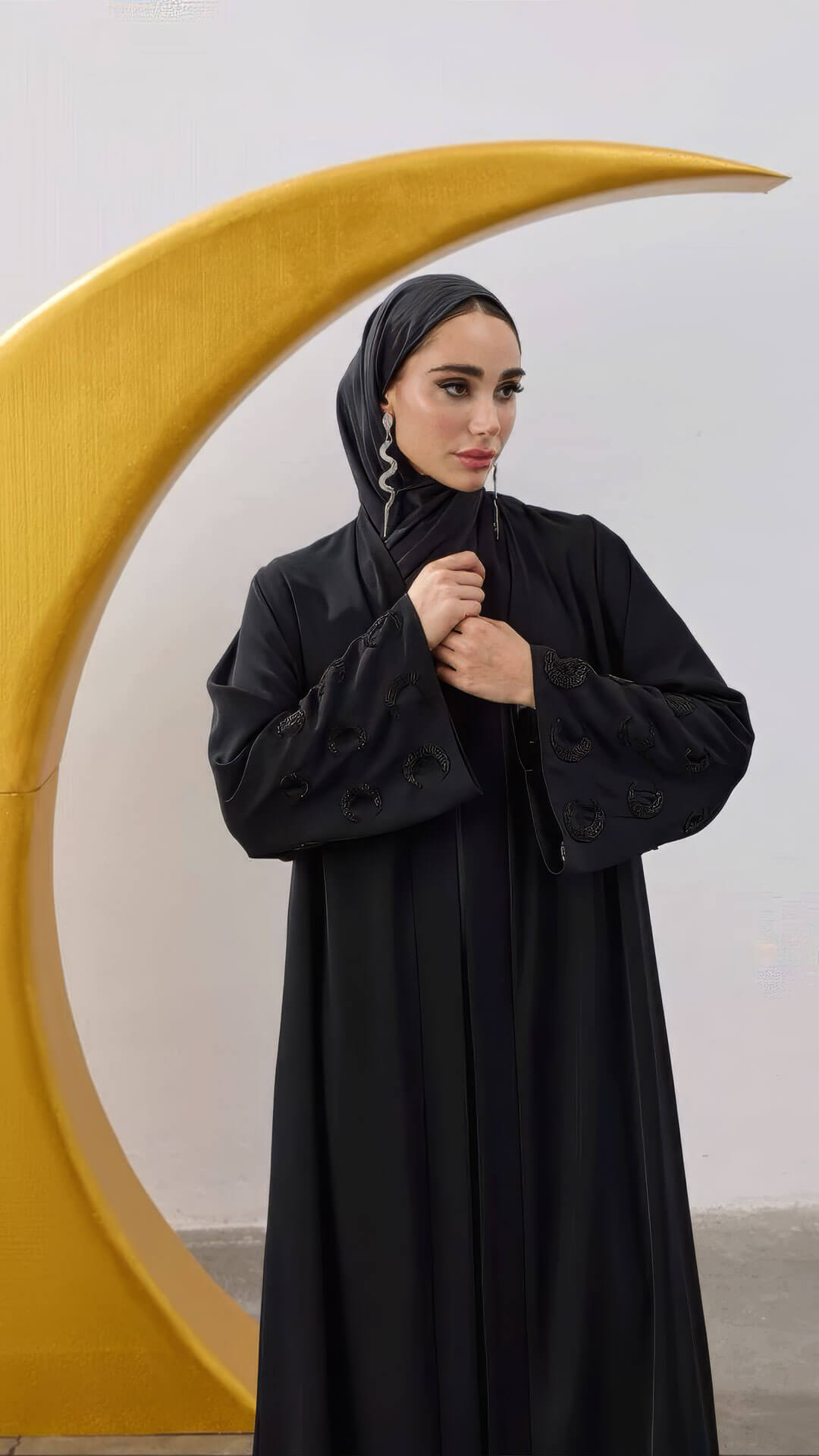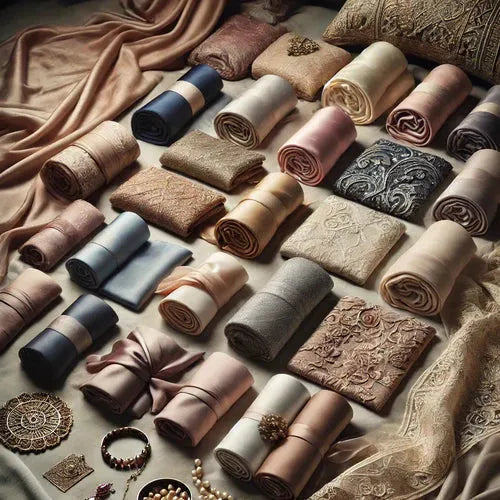Abaya fabrics in detail: From silk to jersey – which fabric suits you?
Choosing the right fabric for an abaya is essential to ensure both style and comfort. In this blog post, we offer you a detailed comparison of the most popular abaya fabrics so that you can make the perfect choice depending on the occasion, climate and personal style.
A detailed comparison of the most common abaya fabrics
The variety of abaya fabrics ranges from luxurious options such as silk and velvet to everyday materials such as cotton and jersey. Here is an overview of the different fabrics and their advantages and disadvantages.
Luxurious fabrics for abayas: silk, satin and velvet
silk
Silk is the epitome of luxury and gives your abaya an elegant, shimmering look. Particularly suitable for weddings and religious festivals, it is known for its softness and lightness.
- Advantages: Elegance, smooth texture, ideal for special occasions.
- Disadvantages: High maintenance, higher price.
Satin
Satin offers a shiny finish and soft feel, making it a popular choice for formal occasions. The smooth surface creates a totally stylish look.
- Advantages: Fit and coat-like, suitable for festive events.
- Disadvantages: Care can be more complicated than with other, more robust fabrics.
velvet
Velvet is heavier and adds a touch of opulence to any abaya. Particularly suitable in colder climates and for festive occasions, velvet is often worn with additional embellishments.
- Advantages: warmth and elegance.
- Disadvantages: Low breathability, making it less practical for warmer years.
Breathable fabrics for abayas: cotton, linen and muslin
Cotton
Cotton is the most popular fabric for abayas, especially in hot climates. Its breathability and ease of care make it an excellent everyday choice.
- Advantages: Breathable, easy-care and comfortable.
- Disadvantages: May wrinkle and lose shape.
Linen
Linen is lightweight, breathable and ideal for summer. Using linen provides comfort and style, although it requires special care.
- Advantages: Shrinks well, breathable.
- Disadvantages: Tendency to wrinkle, less soft than other fabrics.
muslin
Muslin is known for its airiness and transparency. Perfect for warm days and layered looks, the fabric creates an elegant silhouette.
- Advantages: Creates an airy, light abaya.
- Disadvantages: Vulnerable to damage due to thinness.
Light and modern fabrics for abayas: chiffon, jersey and crepe
chiffon
Chiffon adds a feminine, flowing touch to your abaya and is great for warmer weather. Layering with chiffon can create a luxurious, elegant effect.
- Advantages: Transparent, light and elegant.
- Disadvantages: Can be sensitive and requires gentle care.
jersey
Jersey is the fabric of choice for everyday abayas, known for its comfort and freedom of movement.It adapts well and is easy to care for, making it the ideal choice for everyday use.
- Advantages: Comfortable, stretchy and easy to care for.
- Disadvantages: Less formal than luxurious alternatives.
crepe
Crepe offers a structured and wrinkle-free look that is ideal for a variety of occasions. Its versatility makes it a popular material for modern abayas.
- Advantages: Keeps shape, wrinkle-free.
- Disadvantages: May be less breathable than natural fibers.
Synthetic fabrics: Polyester and Ayrobin
polyester
Polyester offers outstanding durability and is easy to care for, making it a practical choice for many abayas. It maintains its shape and wrinkle resistance.
- Advantages: Low maintenance, versatile.
- Disadvantages: Not breathable, can be uncomfortable in hot weather.
Ayrobin
Ayrobin is a lightweight, breathable synthetic fabric. Its moisture-wicking properties make it perfect for warm climates.
- Advantages: Resistant to moisture and dirt.
- Disadvantages: May feel uncomfortable on the skin.
Abaya fabrics for different occasions and seasons
Summer
For summer, we recommend breathable fabrics such as cotton or linen, which keep the body cool while offering style.
winter
In winter, thicker, luxurious materials like velvet or silk are the best choice to stay warm and elegant.
Formal occasions
For weddings or special occasions, luxurious fabrics such as silk or satin are ideal for creating an upscale look.
Everyday
For everyday use, practical fabrics such as jersey or polyester are suitable, as they are both comfortable and easy to care for.
Tips for choosing the right abaya fabric
- Consider the climate: Choose light fabrics for summer and thicker materials for winter.
- Select occasion: Luxurious fabrics for special occasions, comfortable materials for everyday use.
- Personal style: Let your own style and comfort influence the decision.
Conclusion
Choosing the right abaya fabric depends on many factors, including climate, occasion and personal preference. Whether you prefer the luxury of silk or the comfort of jersey, there is a fabric to suit every taste. With these tips, you'll be well equipped to choose the perfect abaya for any occasion while remaining both stylish and comfortable.





